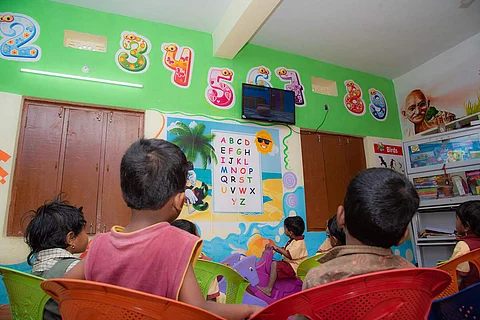

Caste is an overarching reason for high stunting rates among children under five in India, a recent paper has pointed out. The paper by economists Ashwini Deshpande and Rajesh Ramachandran takes on the question of why the prevalence of childhood stunting is higher in India – considered a richer region – compared to countries in sub-Saharan Africa (SSA). The paper says that the childhood stunting rate in India’s dominant socio-economic group — Hindus who are not SC, ST or Other Backward Class (OBC) — is 27% compared to the 33.6% in 19 SSA countries. The national childhood stunting rate in India is 35.7%, according to the paper.
The idea of the “Indian Enigma”, the paper says, has spurred multiple studies in the past on why “India has a higher prevalence rate of childhood stunting compared to SSA despite the fact that children in SSA face a worse disease environment and have access to fewer calories: the two key factors determining child height.” However, these studies, the authors point out, have not taken into adequate account the role of two “hidden divides”: caste and religion.
In this respect, the authors examined and compared childhood stunting in India across six caste-religion identities: Scheduled Castes (SC); Scheduled Tribes (ST); Other Backward Classes (OBCs); non-SC-ST-OBC Hindus; non-SC-ST-OBC Muslims; and the non-SC-ST-OBC Rest.
“In India, the role of religion and caste or tribal affiliation as classifiers cannot be overemphasised,” the paper states, adding, “Our findings suggest that caste needs to be explicitly accounted for in any policy that intends to address India’s high rates of stunting.”
The paper says that childhood stunting rates among SC and ST communities is 40%, among Muslims who are not SC, ST or OBC it is 37%, and among OBC it is 35%. As is plain, this means that childhood stunting occurs at a higher rate compared to the rate in SSA only among SC, ST, OBC communities and Muslims even from dominant caste backgrounds.
Notably, the data regarding Christian and Muslim Dalits and Adivasis has been included under the SC and ST categories in the paper. It is to be recalled that the Union government continues to refuse such recognition officially. Dalit and Adivasi Christians and Muslims are only accorded OBC status even though they face discrimination specifically due to their caste identity.
While the SSA includes 49 out of the 54 countries in Africa, this paper examined childhood stunting in 19 of these countries: South Africa, Zimbabwe, Uganda, Nigeria, Madagascar, Burundi, Chad, Angola, Cameroon , Gambia, Guinea, Liberia, Mauritania, Mali, Malawi, Rwanda, Tanzania, Zambia, and Sierra Leone.
According to the paper, the children-under-five population in SSA and India is 44%, but both regions together account for 70% of childhood stunting cases globally. In India, 24% of the under-five population are SC; 10% are ST; 14% are non-SC-ST-OBC Hindus; 5% are non-SC-ST-OBC Muslims, and 1% are non-SC-ST-OBC Rest. There is no official definitive count of the population proportion of OBCs since the national census has, thus far, not enumerated them, the paper adds.
The paper says that the average height-for-age z-score (HFA z-score) among Indian children (-1.33) is actually higher compared to children in SSA (-1.40). In very simplified terms, a z-score tells us how many standard deviations or loosely, points, away from the average a given factor, such as height here, is. So while children are on average taller in India compared to SSA children, as previously mentioned, the national rate of childhood stunting is higher in India (35.7%) compared to 19 SSA countries (33.6%).
Further, comparing non-SC-ST-OBC Hindu children and the children in SSA showed that the latter are around 20% less likely to be stunted. The paper also states that even after taking into account other factors highlighted such as “birth order, open defecation, mother’s height, and sibling size—to explain India’s exceptionally high rate of stunting, as well as mother’s education and anaemia status, and the socioeconomic position of households, SC children are still a whole 5% points or 20% more likely to be stunted.”
These factors at the most explain one-third of the gap in stunting rates between different caste groups in India, the authors further say, adding, “This suggests that the factors affecting gaps between social groups in India are distinct from the factors affecting gaps in stunting between India and SSA.”